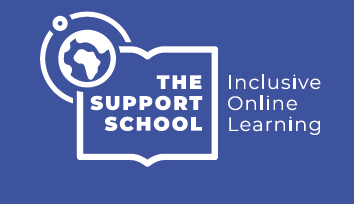Introduction
Inclusive education is a fundamental right for all students, regardless of their abilities or disabilities. In recent years the discussion around equality, diversity and inclusion has grown, yet some of us have been working and fighting this corner for over 20 years now. Supporting students with disabilities in mainstream classrooms is crucial for creating an inclusive learning environment that fosters their academic, social, and emotional growth, yet many teachers and support staff lack the critical skills required to meet these needs. By providing the necessary accommodations and resources, we can ensure that every student has equal opportunities to thrive. In this post, we will explore various strategies and initiatives aimed at supporting students with disabilities in mainstream classrooms, while also highlighting the benefits of online education delivery for students with special educational needs and disabilities (SEND).
1. Individualised Education Plans (IEPs)
Individualised Education Plans (IEPs) are personalised plans developed for students with disabilities or additional needs to address their specific learning needs. These plans remain relevant even in online education delivery. By incorporating the IEP into online learning platforms, teachers can ensure that accommodations, modifications, and support services are still implemented effectively, allowing students with disabilities to engage in remote learning with equality of access to resources.
2. Universal Design for Learning (UDL) Universal Design for Learning (UDL) is an inclusive approach that benefits from online education delivery. Online platforms can be designed with various accessibility features, such as closed captions, screen readers, and adjustable font sizes, catering to the diverse needs of students with disabilities. UDL principles can be seamlessly integrated into online learning environments, providing multiple means of representation, engagement, and expression for students with SEND. TSS ensures through our rigorous quality assurance, that all courses on our virtual learning platform meet UDL criteria which is inclusive for all learners.
3. Assistive Technology in Online Education Online education offers a unique advantage in leveraging assistive technology for students with disabilities. Various digital tools and software, such as speech-to-text, text-to-speech, and virtual manipulatives, enhance accessibility and learning experiences for students with disabilities. These assistive technologies bridge learning gaps, promote independence, and enable students to actively participate in online classrooms. Much of this technology is free to access or incorporate into established platforms and applications already. Even today, I still dictate much of what I write into Microsoft Word documents – including when writing reports.
4. Flexibility and Personalised Learning
Online education delivery allows for greater flexibility, which is particularly beneficial for students with disabilities. Students with SEND may have varying needs, preferences, and learning styles. With online learning, students can access materials at their own pace, review content as needed, and engage with interactive multimedia that supports their unique learning requirements. This flexibility enhances personalised learning experiences and empowers students with disabilities to take ownership of their education. Schools and educators often forget that students with disabilities have a whole different routine just to get ready to get to school, which often takes hours each morning. Online delivery offers an opportunity to reduce the stress and anxiety which many students with additional needs experience simply by having to get ready to attend their educational placement.
5. Reduced Sensory Overload and Anxiety Traditional classrooms can be overwhelming for students with sensory processing disorders. Online education provides a controlled learning environment, minimising distractions and sensory overload. Students with SEND can create personalised spaces conducive to their learning needs, utilising strategies such as noise-cancelling headphones, dimmed screens, or designated quiet areas. Reduced sensory stimuli can alleviate anxiety and promote focus, enhancing the learning experience for students with disabilities.
6. Enhanced Communication and Collaboration Online education platforms facilitate improved communication and collaboration among students, teachers, and parents. This is particularly beneficial for students with disabilities who may require additional support and regular communication with their teachers. Features like instant messaging, video conferencing, and virtual group discussions enable real-time interaction, allowing students to seek clarification, share ideas, and receive individualised guidance.
7. Professional Development and Training Supporting students with disabilities in an online education environment requires specialised knowledge and training for educators. Professional development programs can equip teachers with the necessary skills to effectively utilise online learning tools, adapt materials, and provide targeted support to students with disabilities. Teachers can gain insights into emerging assistive technologies and inclusive practices in online education through relevant training opportunities and professional discourses with colleagues within the education and ed-tech community.
Conclusion
Supporting students with disabilities in mainstream classrooms through inclusive education strategies and initiatives is crucial. The benefits of online education delivery further amplify the inclusivity of educational environments for students with SEND. By incorporating individualised education plans, leveraging universal design for learning, utilising assistive technology, and capitalising on the flexibility and personalised learning opportunities offered by online education, we can ensure that students with disabilities receive the necessary accommodations and resources to thrive academically, socially, and emotionally.
References:
1. Individuals with Disabilities Education Act (IDEA) - https://sites.ed.gov/idea/
2. Center for Parent Information and Resources - https://www.parentcenterhub.org/
3. National Center on Accessible Educational Materials - https://aem.cast.org/
4. Understood - https://www.understood.org/
Inclusive education is a fundamental right for all students, regardless of their abilities or disabilities. In recent years the discussion around equality, diversity and inclusion has grown, yet some of us have been working and fighting this corner for over 20 years now. Supporting students with disabilities in mainstream classrooms is crucial for creating an inclusive learning environment that fosters their academic, social, and emotional growth, yet many teachers and support staff lack the critical skills required to meet these needs. By providing the necessary accommodations and resources, we can ensure that every student has equal opportunities to thrive. In this post, we will explore various strategies and initiatives aimed at supporting students with disabilities in mainstream classrooms, while also highlighting the benefits of online education delivery for students with special educational needs and disabilities (SEND).
1. Individualised Education Plans (IEPs)
Individualised Education Plans (IEPs) are personalised plans developed for students with disabilities or additional needs to address their specific learning needs. These plans remain relevant even in online education delivery. By incorporating the IEP into online learning platforms, teachers can ensure that accommodations, modifications, and support services are still implemented effectively, allowing students with disabilities to engage in remote learning with equality of access to resources.
2. Universal Design for Learning (UDL) Universal Design for Learning (UDL) is an inclusive approach that benefits from online education delivery. Online platforms can be designed with various accessibility features, such as closed captions, screen readers, and adjustable font sizes, catering to the diverse needs of students with disabilities. UDL principles can be seamlessly integrated into online learning environments, providing multiple means of representation, engagement, and expression for students with SEND. TSS ensures through our rigorous quality assurance, that all courses on our virtual learning platform meet UDL criteria which is inclusive for all learners.
3. Assistive Technology in Online Education Online education offers a unique advantage in leveraging assistive technology for students with disabilities. Various digital tools and software, such as speech-to-text, text-to-speech, and virtual manipulatives, enhance accessibility and learning experiences for students with disabilities. These assistive technologies bridge learning gaps, promote independence, and enable students to actively participate in online classrooms. Much of this technology is free to access or incorporate into established platforms and applications already. Even today, I still dictate much of what I write into Microsoft Word documents – including when writing reports.
4. Flexibility and Personalised Learning
Online education delivery allows for greater flexibility, which is particularly beneficial for students with disabilities. Students with SEND may have varying needs, preferences, and learning styles. With online learning, students can access materials at their own pace, review content as needed, and engage with interactive multimedia that supports their unique learning requirements. This flexibility enhances personalised learning experiences and empowers students with disabilities to take ownership of their education. Schools and educators often forget that students with disabilities have a whole different routine just to get ready to get to school, which often takes hours each morning. Online delivery offers an opportunity to reduce the stress and anxiety which many students with additional needs experience simply by having to get ready to attend their educational placement.
5. Reduced Sensory Overload and Anxiety Traditional classrooms can be overwhelming for students with sensory processing disorders. Online education provides a controlled learning environment, minimising distractions and sensory overload. Students with SEND can create personalised spaces conducive to their learning needs, utilising strategies such as noise-cancelling headphones, dimmed screens, or designated quiet areas. Reduced sensory stimuli can alleviate anxiety and promote focus, enhancing the learning experience for students with disabilities.
6. Enhanced Communication and Collaboration Online education platforms facilitate improved communication and collaboration among students, teachers, and parents. This is particularly beneficial for students with disabilities who may require additional support and regular communication with their teachers. Features like instant messaging, video conferencing, and virtual group discussions enable real-time interaction, allowing students to seek clarification, share ideas, and receive individualised guidance.
7. Professional Development and Training Supporting students with disabilities in an online education environment requires specialised knowledge and training for educators. Professional development programs can equip teachers with the necessary skills to effectively utilise online learning tools, adapt materials, and provide targeted support to students with disabilities. Teachers can gain insights into emerging assistive technologies and inclusive practices in online education through relevant training opportunities and professional discourses with colleagues within the education and ed-tech community.
Conclusion
Supporting students with disabilities in mainstream classrooms through inclusive education strategies and initiatives is crucial. The benefits of online education delivery further amplify the inclusivity of educational environments for students with SEND. By incorporating individualised education plans, leveraging universal design for learning, utilising assistive technology, and capitalising on the flexibility and personalised learning opportunities offered by online education, we can ensure that students with disabilities receive the necessary accommodations and resources to thrive academically, socially, and emotionally.
References:
1. Individuals with Disabilities Education Act (IDEA) - https://sites.ed.gov/idea/
2. Center for Parent Information and Resources - https://www.parentcenterhub.org/
3. National Center on Accessible Educational Materials - https://aem.cast.org/
4. Understood - https://www.understood.org/



